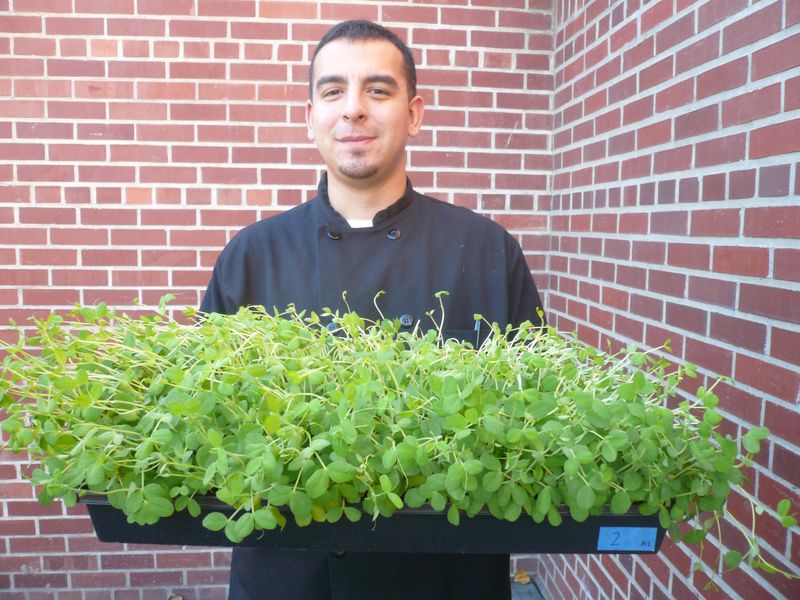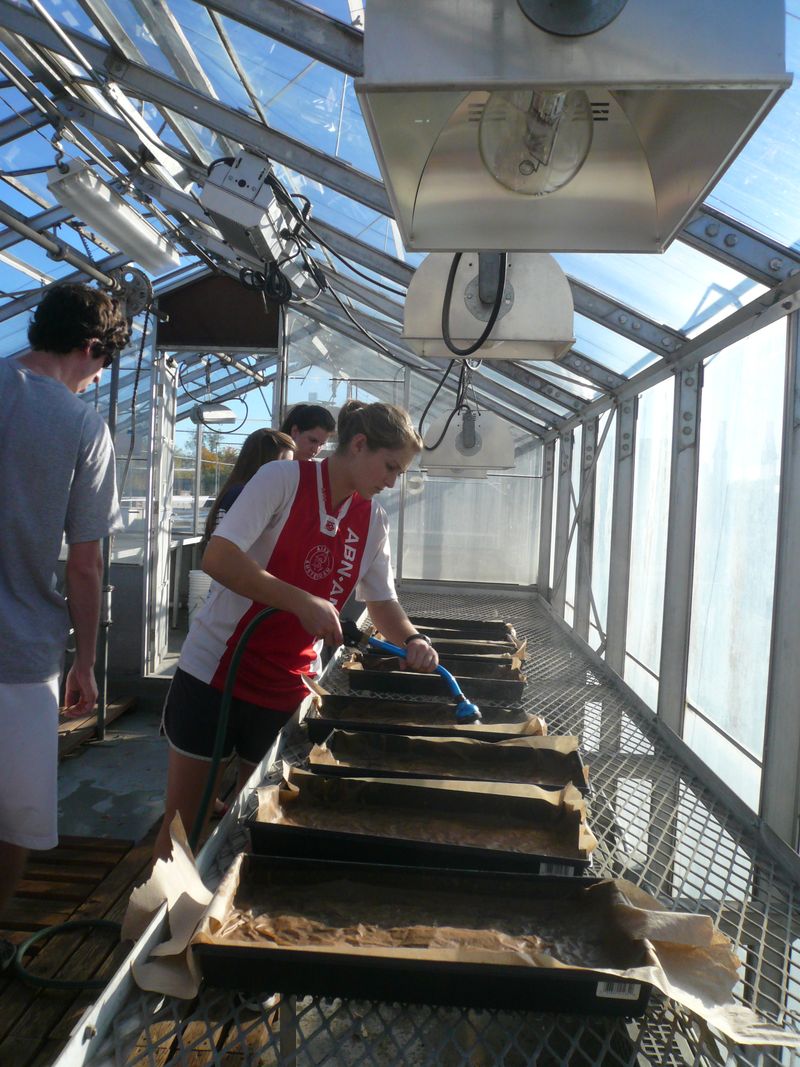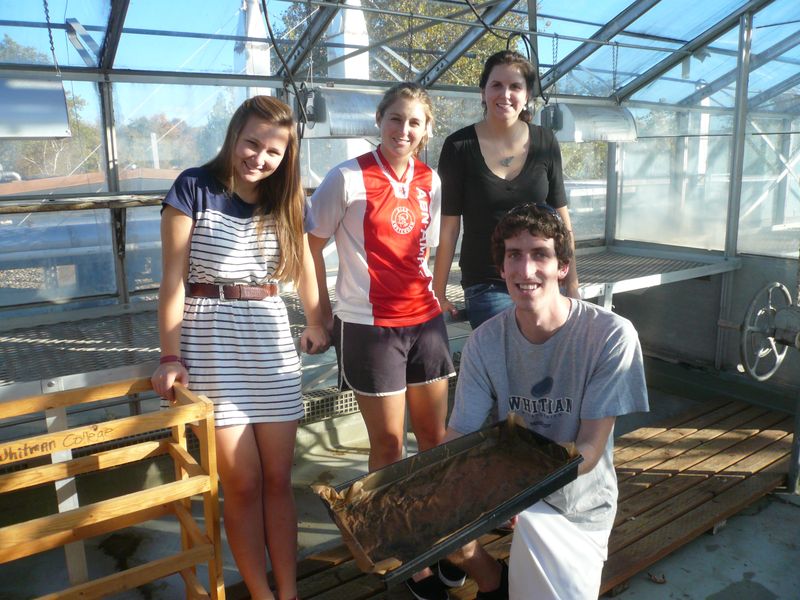From Rooftop to Salad Bowl: Microgreens Galore
- by Vera Chang
By Vera Chang, West Coast Fellow, Bon Appétit Management Company Foundation
The Whitman Model Farm Project not only conserves natural resources and improves Whitman College’s environmental efficiency, but also happens to produce delicious food. I know because I just had an outstanding salad at Bon Appétit Management Company’s Prentiss Dining Hall at Whitman College in Walla Walla, WA for lunch. Now, post-meal, like a salad lover in search of her pot of gold, I’m off to find out where my microgreens[1] came from. It turns out that in the rooftop greenhouse of Whitman College’s Hall of Science, salad grows.
Sweet pea tendril vines wind their way up from growing trays. Four students are planting and watering seeds. I am sweltering under the greenhouse’s captured sun, but still determined to learn more about my lunch.
“Growing microgreens is easy,” student Zoe Pehrson ‘13 tells me, and explains how: first, I am to find a container that’s at least a couple of inches deep. Then I should fill it with good-quality organic potting soil. If there are holes in the bottom of the trays, I will need to make sure they’re lined (e.g. with flattened coffee filters) so that the soil doesn’t leak out when I water. Then, it’ll be time to scatter the seeds 1/8 to 1/4 inch apart and cover them with a light layer of soil. Next, I’m to water the seeds thoroughly (yet gently) and then place them in a sunny spot where they will get at least four hours of sunlight per day. At this point, the Whitman students take the optional step of covering the seeds with a damp paper towel to help retain moisture. So long as I follow these steps and the soil doesn’t dry out – voila! In just ten days, I, too, will have grown ready-to-enjoy micro sweet peas.
So what do the Whitman students do when the microgreens are ripe for eating? They carry them over to Bon Appétit’s kitchen. Then, as meals are prepared and the salad bar needs replenishing, the greens are freshly cut and added to dishes. More luscious than their sprouted seed counterparts and more tender than baby salad greens, microgreens are the stuff of dreams for farmers, chefs and eaters alike. I can’t wait to grow my own.
PS – There are as many kinds of microgreens as there are salad greens, so whether you are buying or growing them, let your imagination run wild. Maybe you want to also try micro amaranth, micro arugula, micro beet tops, micro cabbage, micro celery, micro chard, micro collards, micro endive, micro kale, micro kohlrabi, micro mustard, micro mizuna, micro sunflowers, micro radish, micro spinach, micro tatsoi, or micro watercress?
[1] Young shoots of standard salad plants (e.g. arugula, spinach)


